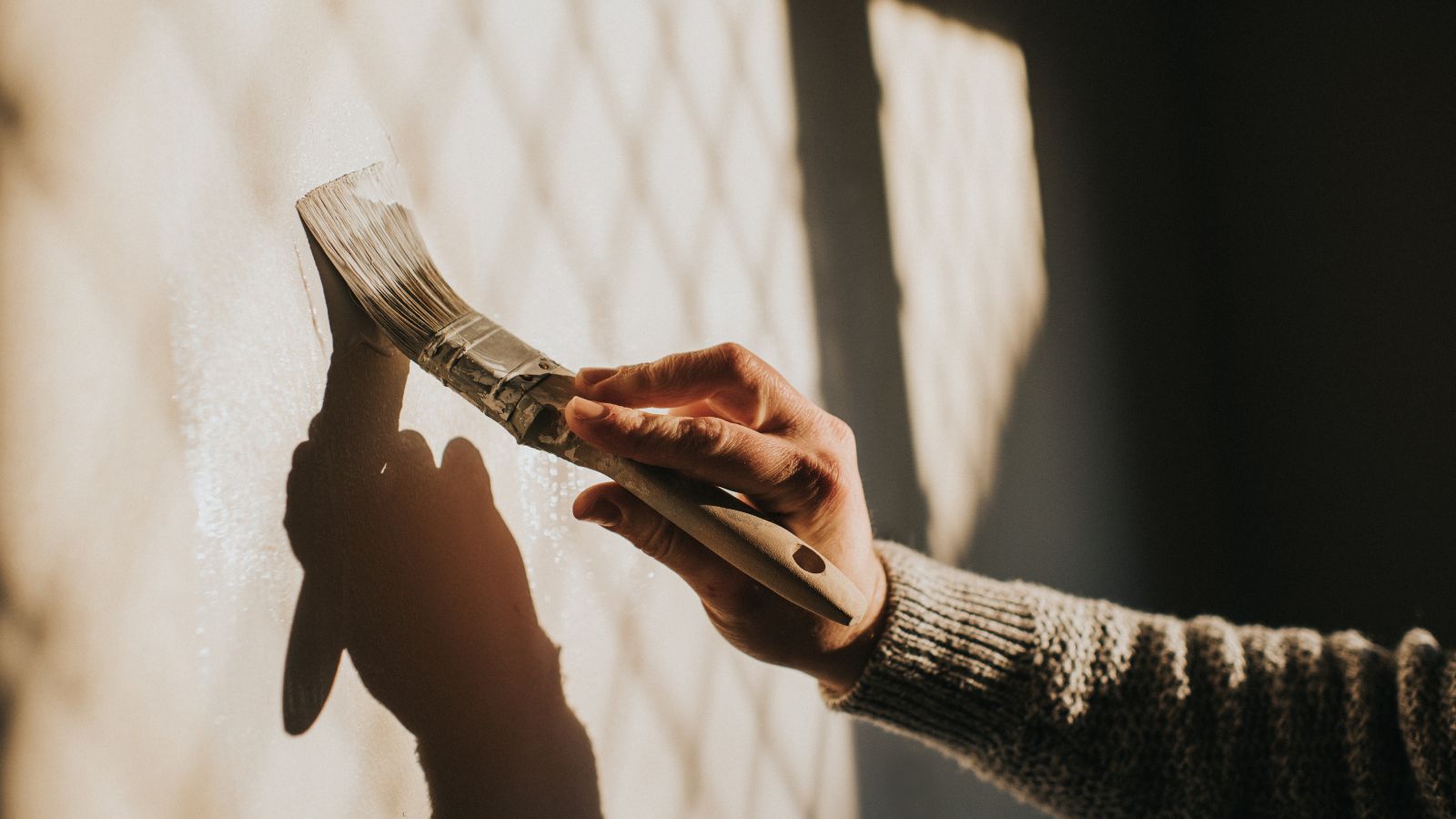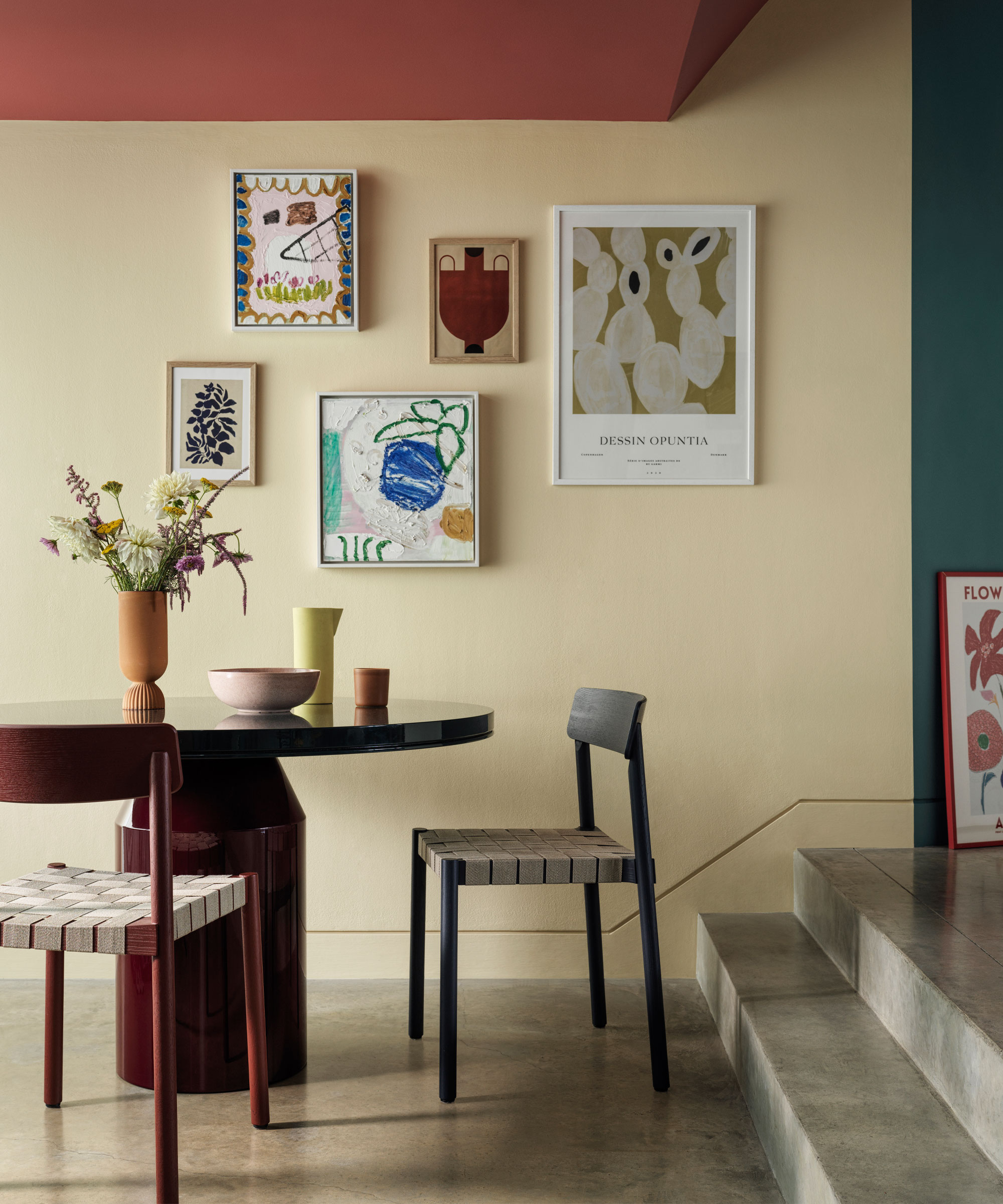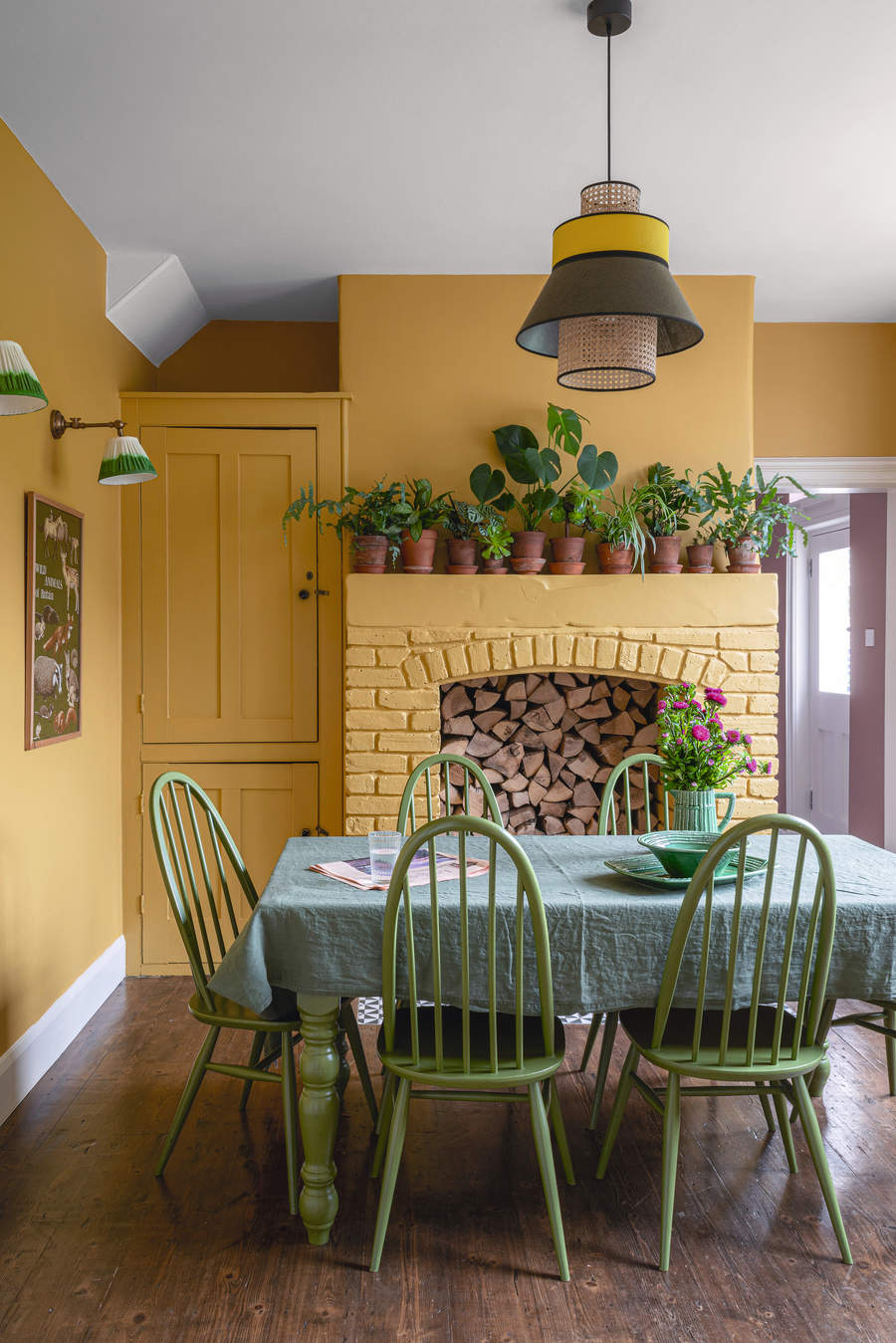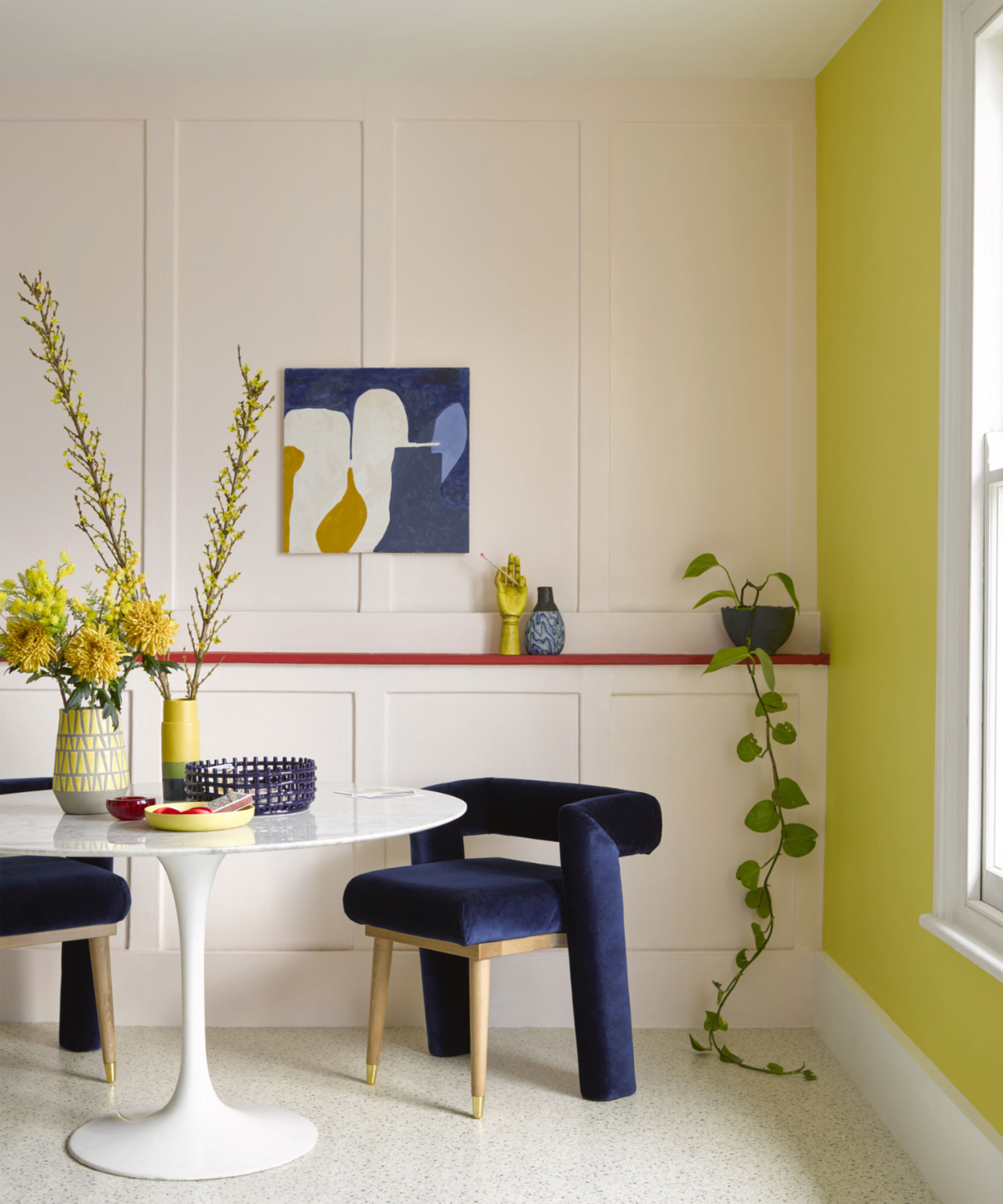
Whether you’re refreshing it with a fresh coat, or changing the look, it’s vital to calculate how much paint you need to paint a room before you get started. Miss this step and run out and it’s another trip to the store; buy too much and it’s a waste.
If you know how to paint a room, you’ll be aware that preparation is vital, but there’s a step that comes before cleaning and taping and that’s figuring out how much paint is necessary for the space.
Here, we explain why it’s so important to do the math first to achieve your paint ideas and how to calculate the quantity of paint required with advice from the professionals.
Calculate how much paint you need to paint a room
The amount of paint that’s needed for a particular room in your home can – and should – be calculated at the start of the project.
However, it does help to have an idea of approximately how much paint is required and there is a guideline you can follow. ‘A general rule of thumb is that one gallon of paint typically covers around 350 to 400 square feet of surface area for a single coat,’ says Ryan Parr, president and owner of Nashville Painting Professionals.
Be aware the many factors affect the final number, which we’ll detail below along with how to figure out how much paint your project requires you to buy, and why making a calculation for the specific room you’re painting is important both for your budget and the finished result.

Why is it important to calculate how much paint is needed?
Calculating how much paint is required at the start of the project is important for a variety of reasons if you want to paint walls like a pro.
‘First, it ensures that you purchase the right quantity of paint, avoiding the inconvenience of running out mid-project or having excess paint left over, which also helps in maintaining consistency in color throughout the room, as variations in color can occur between different paint batches,’ explains Ryan Parr.
‘Second, determining the correct amount of paint reduces waste, which is beneficial both environmentally and economically.
‘Third, by accurately estimating paint requirements, you minimize excess paint that may go to waste, while also helping in budgeting for the project by knowing the amount of paint needed so you can accurately estimate the total cost of materials.
‘Fourth, accurately calculating paint quantities enables you to plan for contingencies, such as touchups or future maintenance, ensuring that you have sufficient paint on hand for any future needs.
‘Lastly, understanding the amount of paint required can help in selecting the appropriate paint type and finish, ensuring optimal performance and durability based on the specific requirements of the project.’

Paint quantity calculation
These are the steps you need to follow to calculate the paint quantity from paint expert Brandon Walker, superintendent at ASAP Restoration.
- Measure the length and height of a wall. Multiple these two figures together. Then do this same calculation for all the walls in the room. Add up all of these totals and this is the square footage of wall space for the room.
- Once you have chosen a paint, brand and style you can take a look at the manufacturer’s specifications to determine how much coverage it will provide. Gallon quantities of most paint brands will cover anywhere between 200 to 400 square feet of space depending on the viscosity of the paint.
Heard that you need to take away the area of windows and doors from your answer? ‘Trying to calculate the square footage of windows and doors to subtract that total from the final amount of coverage isn’t a great way to approach the problem because these spaces will most likely require brushwork around the trim and this can eat up just as much if not more paint than the space you are trying to calculate out of the equation,’ says Brandon.
Allow for contingencies. ‘Make sure that you have more coverage available than space to paint,’ he says. ‘It’s important to have a little extra just in case you’ve over-covered in one area and didn’t do enough in another, or for touchups after the whole job is done. Having too much paint is a way better problem to have than not enough, especially when you are in the middle of a project.’
Allow for application method
Be aware that how you apply the paint – whether you opt for a brush or spray paint vs a roller – will affect how much paint you need.
‘Sprayers provide less coverage than rollers because they waste some to the air, they apply paint thicker, and a lot of paint is lost inside of the paint spraying system,’ says Brandon. ‘Generally speaking, you will lose 1 to 3 percent of the paint working with a roller. This paint will be lost drying to the sides of the can as well as inside the fibers of the roller.'
‘You can expect to lose as much as 20 to 30 percent of the paint in a spray gun system.’

Why paint brand matters
The calculation will work for all paint brands but, as noted above, brand is important. ‘All paint brands and styles have different coverage numbers,’ says Brandon.
‘Some paints go on thicker and require fewer coats to get a uniform look and total coverage. Thinner paints may cover more area, but also require more coats to get the look you want, too.’
The takeaway? ‘Always check the label for coverage specifications,’ says Brandon. ‘Most paints will not list the coverage for a roller and a sprayer system separately, but they will include caveats for coverage loss depending on surface type and this can help to make a determination.’
Think surface
The type of surface you’re painting in a room also affects how much paint you’ll need.
‘Different surfaces absorb paint differently, with porous surfaces like bare wood or plaster requiring more paint compared to smoother surfaces like primed drywall,’ says Ryan. ‘The condition of the surface also plays a role, as damaged or uneven surfaces may require additional coats of paint to achieve full coverage.’
Factor in finish and color
The paint finish selected can also have an influence on how much paint is used.
‘The desired finish affects paint coverage, with matte or flat finishes typically requiring more paint than satin or semi-gloss finishes due to their light-absorbing properties,’ says Ryan.
‘Darker colors may also require more coats than lighter colors to achieve full coverage,’ he notes.
Coverage is one issue you need to think about when painting a room, but be sure to check color first, too, by using paint samples correctly. To make the job easier once you’ve chosen, try a paint edger tool that saves time and don’t forget to dispose of paint safely if you won’t need it again.







